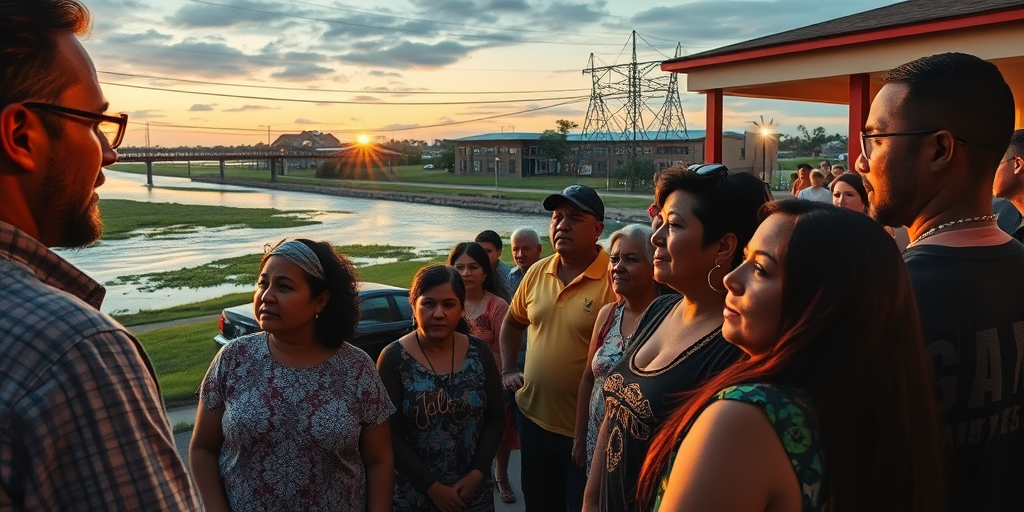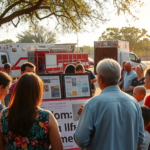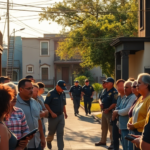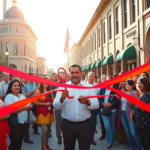Juvenile Justice Challenges in Cameron County: Addressing the Rise in Youth Offenders
Local authorities in Cameron County, Texas, are confronting a troubling trend of increasing juvenile offenses. Recent statistics from the Darrell B. Hester Juvenile Detention Center in San Benito reveal a concerning rise in youth entering the detention system, underscoring the need for a focused examination of juvenile justice in the Rio Grande Valley (RGV).
The Arrest that Shines a Light on a Wider Issue
The arrest of a primary suspect linked to a fatal stabbing in February 2025 outside a Brownsville funeral home has highlighted the growing concern. While the specifics of the case remain under investigation, this incident punctuates the ongoing discussion about juvenile crime in the region.
Cameron County has reported a worrying increase in young offenders, with some as young as 10 years old entering the system. The rise in numbers, illustrated by 897 offenses recorded in 2024 compared to 809 in 2022, has prompted authorities to assess the efficacy of current laws and explore potential reforms.
Calls for Legal Reform
Cameron County District Attorney Luis Saenz has been vocal about the need for updating juvenile laws to reflect modern challenges. Current statutes, he argues, are outdated and ill-equipped to handle contemporary issues such as the prevalence of THC vape pens among minors.
“I can tell you that the feeling of the community is that not enough is being done to deal with the influx of juvenile criminal conduct,” Saenz stated, emphasizing the need for more stringent measures to curb recurring offenses.
A Judicial Perspective Focused on Rehabilitation
Judge Adela Kowalski-Garza, who presides over the juvenile court in the county, advocates for a rehabilitative approach rather than a punitive one. Her focus is on steering juveniles away from crime by offering them support and guidance rather than simply penalizing them.
“The majority are just good kids making a bad choice,” Kowalski-Garza remarked. She supports tailored programs that consider the individual backgrounds of juveniles, addressing factors such as mental health and unstable home environments.
Personal Stories and Lessons Learned
Manny Delgado, a former juvenile offender, serves as a testament to the potential success of rehabilitation. During his time in the system, Delgado was initially depicted by others as someone destined to repeatedly offend. However, through participation in structured programs, he found motivation to turn his life around.
Delgado is now a martial arts instructor and has earned a degree in criminal justice. Reflecting on his past, he stated, “Every little thing that’s happened has helped build me to the person I am today.”
The Way Forward: Community and Legislative Efforts
The community continues to call for changes in the juvenile justice system to prevent reoffending. Saenz and Kowalski-Garza both underscore the critical need for a balanced system that holds young offenders accountable while also offering paths to reform and growth.
For Valley residents, the challenge is clear: Address the root causes of juvenile delinquency while fostering an environment conducive to second chances. The region’s unique cultural and economic landscape requires solutions that are both comprehensive and compassionate.
The Importance of Community Engagement
Given the complexities of juvenile crime, a coordinated effort from lawmakers, law enforcement, educators, and community members is essential. Public forums, support groups, and legislative initiatives are just a few avenues through which the community can participate in shaping a more effective juvenile justice system.
Dr. Alcides Amador, a psychiatrist and UTRGV professor, highlights the role of family dynamics and socioeconomic factors in juvenile behavior. “With the current state of how things are with our economy—rising prices—there could be a connection but it’s very complex,” he explained.
Connecting the Past with Future Strategies
Previous experiences with juvenile crime in Cameron County provide valuable insights for crafting future strategies. Understanding historical data and trends assists local authorities in developing targeted interventions aimed at reducing recidivism and fostering long-term behavioral change among youth.
Local resources, such as counseling services, educational workshops, and parent outreach programs, remain vital in this effort. By empowering families and engaging youths positively, the RGV community can hope to curtail the rising tide of juvenile offenses.
In conclusion, addressing the complexities of juvenile justice in Cameron County requires multifaceted approaches grounded in updated laws, community collaboration, and a commitment to positive change. As policymakers and residents work together, they strive to cultivate a safer, more supportive environment for the Valley’s youth.







